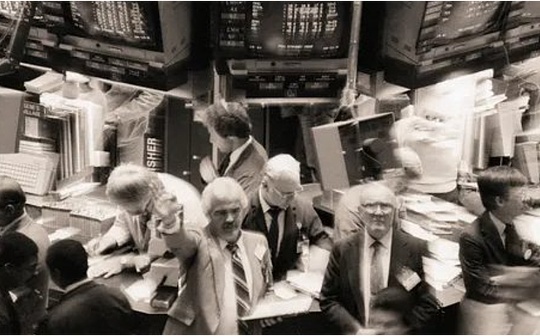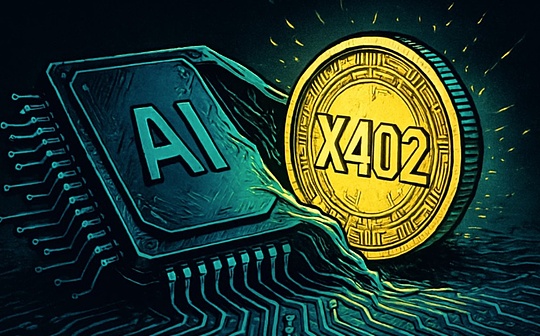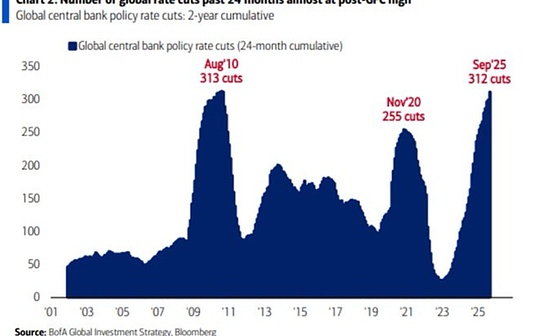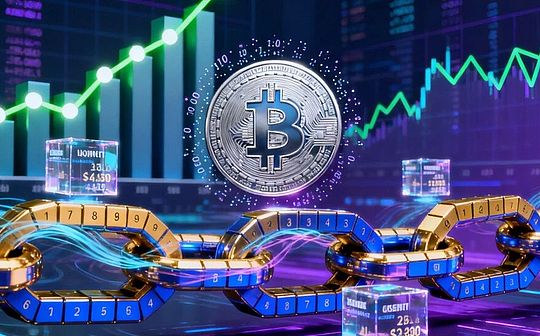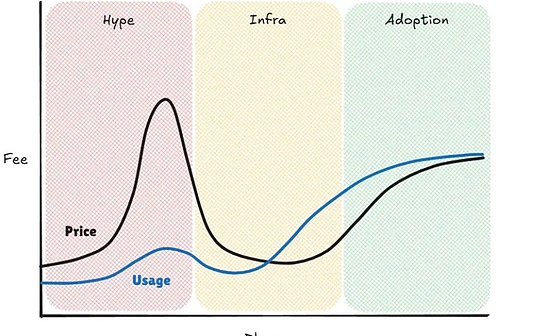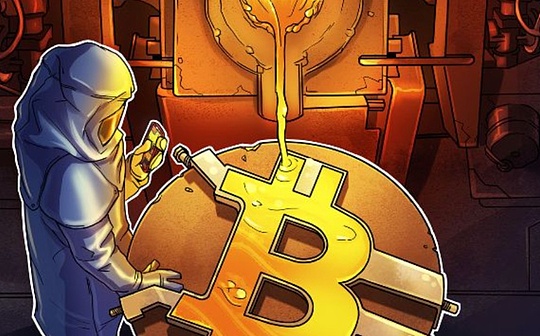
Author: Dilip Kumar Patairya, Source: Cointelegraph, Compiler: Shaw Bitcoin Vision
1. How the gold rush will end in October 2025
Driven by strong safe-haven demand, gold prices rose sharply, exceeding $4,300 an ounce and hitting a record high.By October 2025, the market will begin to take profits.
On October 17, 2025, gold prices fell by more than 2% immediately after reaching the milestone.At press time, spot gold was trading at about $4,023 an ounce, down 8.1% from its all-time high of $4,378.69.
The main trigger for the decline was the easing of trade tensions between the United States and China after U.S. President Trump said that comprehensive tariffs on China were unsustainable.Additionally, a stronger U.S. dollar and renewed investor interest in high-yielding assets like Bitcoin also contributed to the pullback.
2. The History of Gold: Plunges and Peaks
The history of gold prices is full of dramatic rises and falls, driven by inflation, interest rates and geopolitical events.From the peak in the early 1980s to the sharp correction after 2013, to the strong rebound in the 2020s, and then to the decline in October 2025, the gold market has experienced several ups and downs.
-
1980-1999: Driven by high inflation and geopolitical tensions, gold prices soared rapidly, peaking at about $850 an ounce in January 1980.Subsequently, then-Federal Reserve Chairman Paul Volcker significantly raised interest rates, triggering the “Volcker shock” and the gold rally ended.Between 1980 and 1982, the Federal Reserve pushed the federal funds rate above 20% to curb inflation, triggering a severe recession.This triggered a massive sell-off, and by 1982, gold prices fell more than 60% and entered a secular bear market.The price of gold fell from approximately $850 per ounce in 1980 to approximately $278 per ounce in 1999.
-
2012-2018: After gold prices reached their peak in 2011, as the global economy stabilized and stock markets performed well, gold investment became less attractive and gold prices began a long-term decline.In 2013, the Federal Reserve began to scale back its quantitative easing program, the U.S. dollar strengthened, and funds shifted to assets with higher returns, further putting pressure on gold prices.Positions in the SPDR Gold Trust, a major gold-backed exchange-traded fund (ETF), fell by more than 30%, indicating waning investor interest.Between 2014 and 2018, gold prices fluctuated between $1,200 and $1,400 an ounce, well below levels of around $1,680 in 2012.
-
2020s: In the 2020s, gold regained its status as a safe-haven asset during a period of global uncertainty.The COVID-19 pandemic has stalled economies and governments have launched more than $10 trillion in stimulus packages, raising concerns about inflation.By 2022, U.S. inflation has climbed to over 9%, solidifying gold’s status as a financial security tool.Central banks have also increased their gold purchases, adding approximately 1,000 tons of gold per year between 2022 and 2024.Even with rising interest rates, gold prices have risen from over $1,785 in 2020 to over $3,200 in early 2025.
However, gold’s decline in October 2025 has investors looking for alternatives such as Bitcoin, which is relatively immune to government and central bank policies.
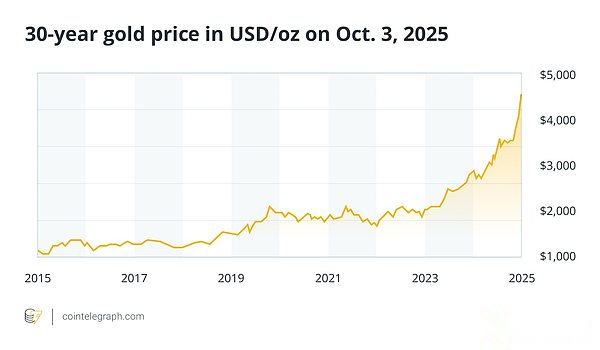
3. How money starts flowing into Bitcoin
The term “digital gold” is becoming more and more popular, and young investors increasingly view Bitcoin as a modern means of resisting inflation and currency devaluation.Bitcoin is considered by many to be more accessible and innovative than physical gold, causing its market capitalization to soar from $134 billion in 2019 to more than $2.4 trillion in the first half of 2025.
Spot Bitcoin ETFs and exchange-traded products (ETPs) provide professional-level investment channels for institutional investors, attracting billions of dollars in compliant capital inflows.In early October 2025, the U.S. spot Bitcoin ETF’s single-week capital inflow hit a record of US$3.55 billion. Among them, BlackRock’s iShares Bitcoin Trust (IBIT) performed outstandingly, helping the price of Bitcoin exceed US$126,000.Meanwhile, gold ETFs have seen outflows of more than $2.8 billion in recent weeks, contrasting with Bitcoin’s strong momentum.
Historically, gold outflows have been inversely related to Bitcoin inflows, with the correlation between Bitcoin and gold falling to -0.3 during periods of heightened risk appetite.Exchange balances have fallen to a six-year low of 2.83 million Bitcoins, indicating easing selling pressure.
4. $200,000 in Bitcoin: Is this a realistic goal?
Bitcoin’s path towards $200,000 appears to be supported by strong market and macroeconomic factors.The April 2024 halving reduces block rewards, causing supply to tighten amid growing demand.Multiple indicators continue to suggest that Bitcoin will grow steadily.
As global debt continues to rise, Bitcoin’s appeal as a decentralized investment asset continues to grow.By the first half of 2025, global debt has reached nearly $338 trillion, approximately 235% of global GDP.
The institutional catalysts driving Bitcoin adoption are growing.As of October 24, 2025, Strategy (MSTR) held 640,418 Bitcoins, followed by Marathon Digital Holdings (MARA) and Celsius (CEP) with 53,250 and 43,514 Bitcoins respectively.
Efforts by the Federal Reserve to ease monetary policy could provide an additional boost.The $200,000 level is a powerful psychological benchmark that could prompt investors to pull money out of assets like gold, with $2.8 billion already seen flowing out of gold ETFs.
5. How funds move from gold to Bitcoin
The movement of funds away from gold and into Bitcoin often defines major market cycles, highlighting how investor preferences evolve over time.Key cycles include:
-
2013-2017: From 2013 to 2017, after peaking in 2011, gold prices basically remained between US$1,200 and US$1,400 per ounce, while Bitcoin soared from US$100 to US$20,000.The rally was driven by retail investors seeking a decentralized currency alternative.
-
2020-2021: Institutional adoption drove Bitcoin prices to $69,000 in 2020-2021, as pandemic-era stimulus and inflation fears prompted companies like Strategy to favor Bitcoin over gold.Historically, gold has attracted cautious investors during periods of stability, but during periods of risk appetite, Bitcoin has tended to attract funds due to its scarcity and growth potential.
Recent trends reinforce this shift.In October 2025, the Bitcoin ETF recorded weekly inflows of $3.55 billion, while the gold ETF saw an outflow of $2.8 billion.The flows underscore the ongoing shift among investors toward digital assets amid ongoing global uncertainty.
6. Bitcoin’s road to $200,000
Although cryptocurrency enthusiasts expect Bitcoin to reach $200,000, the road will not be easy.Among the obstacles are price volatility, regulatory uncertainty, the potential for gold’s recovery and competition from other assets:
-
Bitcoin Volatility: Like all cryptocurrencies, Bitcoin is extremely volatile and experiences sharp rises and falls.Buying by institutional investors can trigger a price increase, while selling by large holders (“whales”) can cause a sudden price drop.
-
regulatory uncertainty: In many parts of the world, Bitcoin regulation is still taking shape.Continued ambiguity around tax and compliance may hinder agency participation.
-
Gold’s possible recovery: In October 2025, some investors who had received huge returns began to withdraw funds from gold mining ETFs.At the same time, according to Reuters, global cryptocurrency ETF inflows hit a record of $5.95 billion in the third week of October 2025.Strong demand for the cryptocurrency asset pushed Bitcoin to record highs.However, gold could still make a comeback as a safe-haven asset.
-
Competition from other assets: The average annual return on stocks is about 10%, competing with digital assets.Tokenized Treasury bonds and central bank digital currencies (CBDC) also offer stable alternatives.These options could divert funds away from Bitcoin.
7. Generational shift in value storage assets
Generational changes are redefining how people think about store-of-value assets.Young investors who grew up in the digital age are increasingly favoring Bitcoin because of its decentralized, borderless characteristics and the high returns it may bring.
In contrast, older generations of investors still prefer gold because of its physical form and proven stability.The growing digitalization trend in finance is accelerating this shift, with blockchain technology replacing slow paper-based systems with a more transparent and efficient alternative.
然而,随着时间的推移,黄金和比特币或许能够在一种双层对冲模式中并存。黄金凭借其物理稀缺性和历史记录提供可靠性,而比特币则凭借其有限的供应和数字适应性提供增长。两者共同在传统与创新之间取得平衡,反映出投资者如何适应日益复杂的金融世界。

